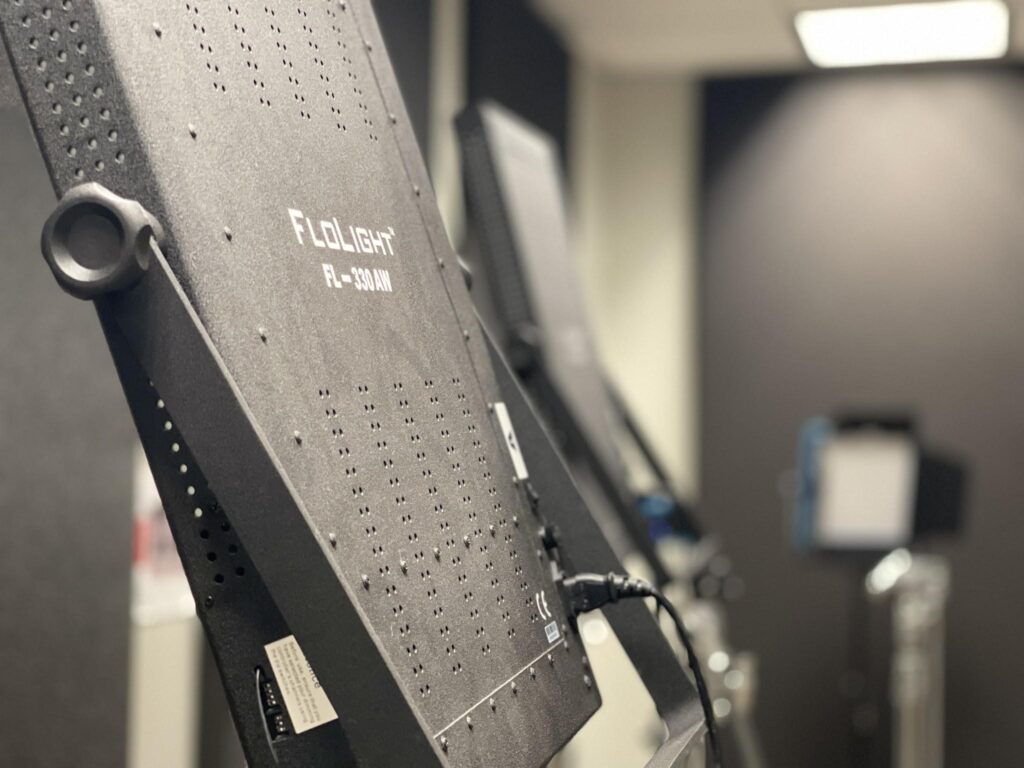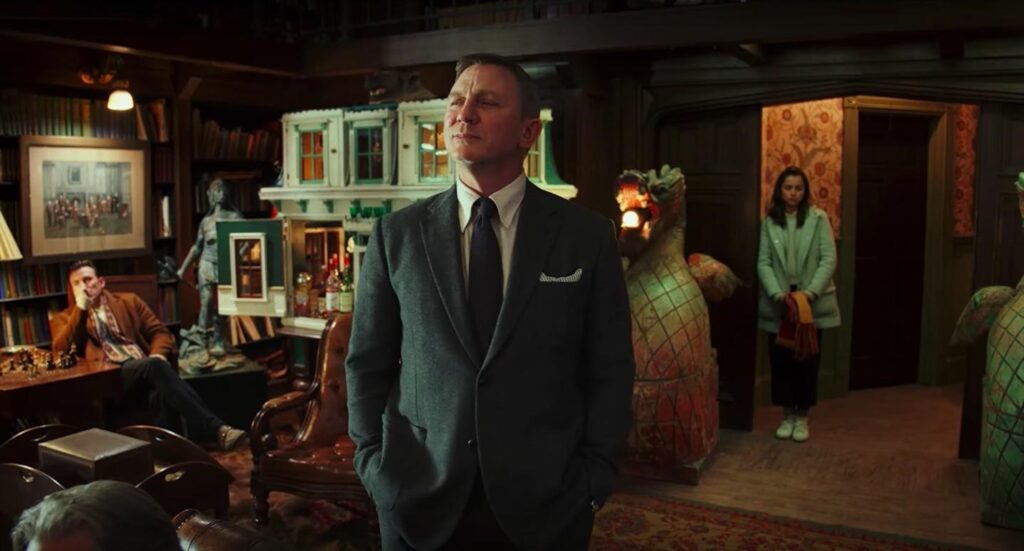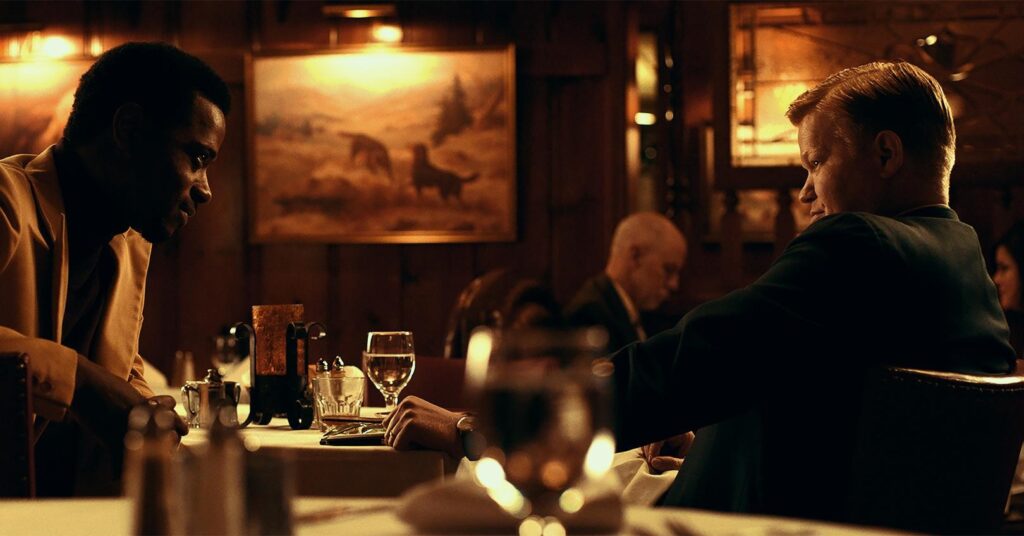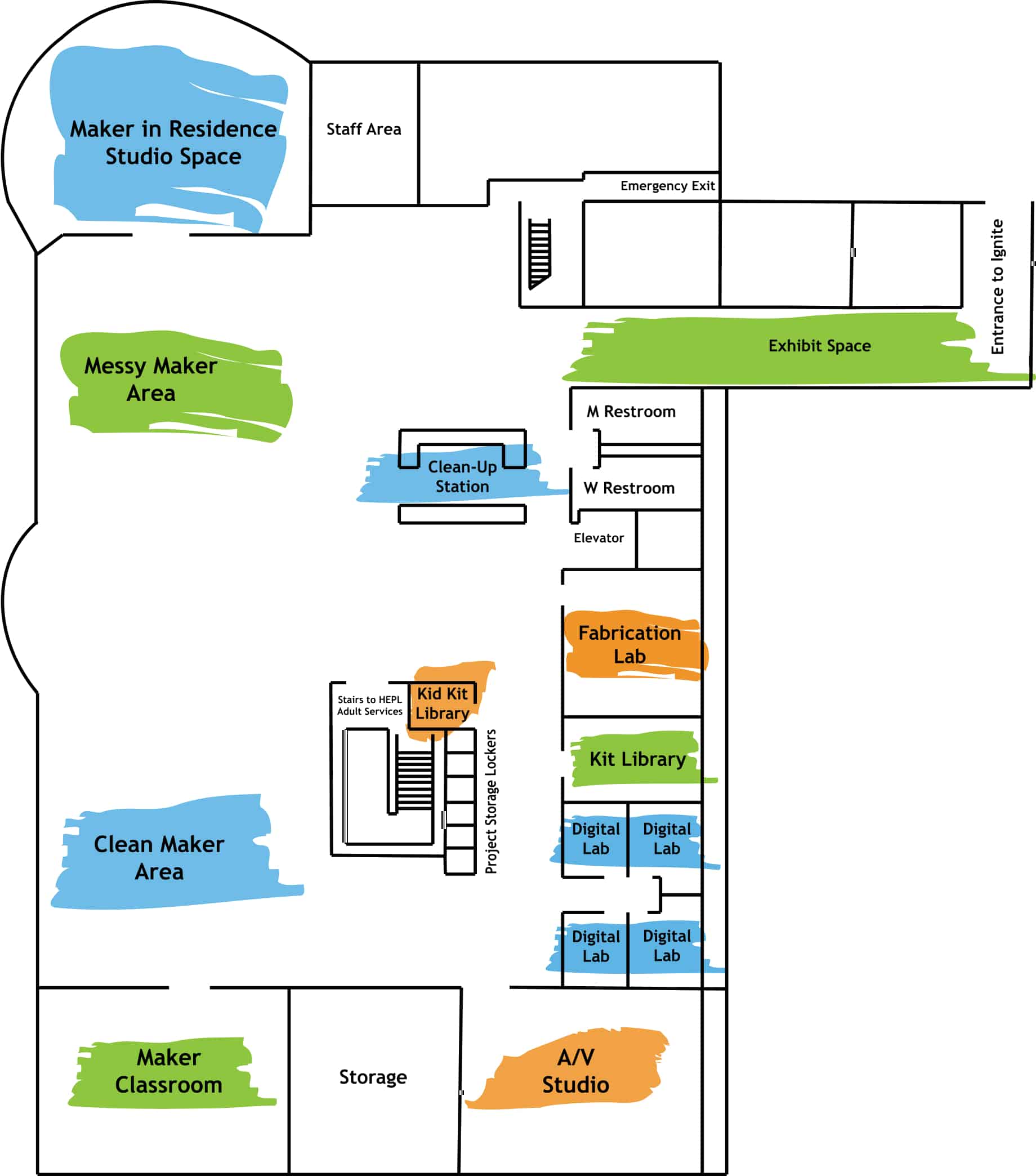by Daniel Wiseman
If you’ve worked in Ignite’s AV studio, chances are you’ve encountered a range of lighting equipment. Learning to achieve great lighting for photo and videography can be overwhelming, especially for beginners–but you’re in luck! This guide will help you understand how to improve your lighting using a series of videos, examples, and resources from experts in lighting, film, and photography.
Before we begin, let’s briefly discuss the lighting equipment here in the AV studio.
Lighting Equipment for Photo and Videography

The AV studio comes equipped with:
- 2x FloLight FL-330 AWs (Largest lights)
- 2x Dracast Daylight LED 1000 (Large lights)
- 1x Dracast Daylight LED 500 (Medium light)
- 1x Dracast Daylight LED 160 (Smallest light)
- 4x Diffuse Gels
- 4x Warm Color Gels
- 2x Reflectors
Each light can be battery operated except for the FloLights, keep that in mind when placing them around your set! You can also request additional extension cords if needed.
Key, Fill, Rim!

The three-point lighting system is a tried and true method to achieve technically good lighting and is frequently used in film, music videos, and professional photo shoots. This lighting technique is the most beginner friendly and will generally suit most purposes such as YouTube videos, portraits, and other small projects.
Check out this video by frameforest and how they demonstrate creating three-point lighting.
What Could Go Wrong?
Making mistakes when lighting is common even to the most hardened of experts. While we can’t stop ourselves from encountering every problem, there can always be a fix for the small ones.
This YouTube video by Aputure, where they talk about common lighting mistakes for beginners in film and photography.
Motivated and Practical Lighting
There’s more to uncover than the three-point lighting system. If you’ve seen a major film recently, you might wonder how they’re able to create such a believable world on set.

Knives Out (2019)
In this scene from Knives Out, you can see some lamps in the background lighting the room and creating ambience–this is called practical lighting, real world lights seen within the shot.
When we use studio lights in tandem with our practical lights, we get an interesting harmony of lighting–known as motivated lighting, a technique used to imitate and enhance the presentation of our practical light sources.

Judas and the Black Messiah (2021)
In this shot from Judas and the Black Messiah (2021), you can see the practical lighting in the background while studio lights take care of the rim and key lights on our subjects–this greatly helps the audience believe that the world in the scene is real.
Watch this video done by Creative Path Films, who does an excellent job demonstrating and setting up motivated lighting.
Ignite Studio doesn’t supply props or practical lights like study lamps, but you’re more than welcome to bring in your own items and create your own set within the studio.
Visual Storytelling and Design Principles
For those going for a more filmic or portrait look, understanding how to achieve good lighting on a technical level is a strong first step into lighting artistry, but lighting is more than just the perfect color temperature or placement.

Even though the subject isn’t lit, this is still great lighting for capturing darker moods.
Incorporating design principles such as key, emphasis, mood, etc., and just thinking from an artistic perspective will dramatically improve your shot.
There’s another excellent video done by Aputure that talks about visual storytelling using lighting, props, etc. and how to bring it all together for film-making!

Hopefully these tips helped you understand how to achieve better lighting for your work. Book a reservation for our AV studio and practice lighting up your set! Happy Making!


